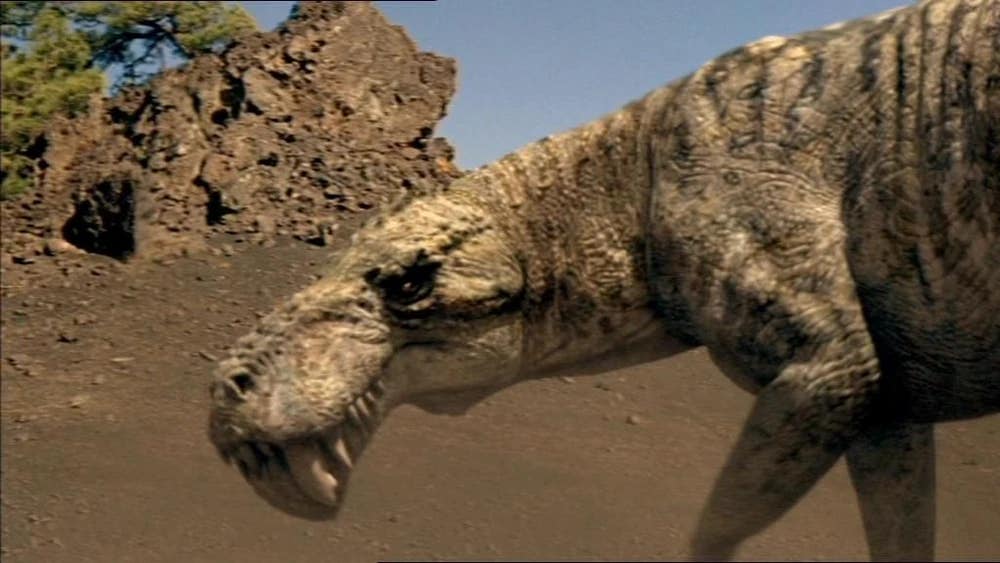280 million-year-old saber-toothed predator fossil redefines mammal evolution
Discovery of the oldest therapsid fossil in Mallorca reshapes our understanding of mammal evolution, extending therapsid origins by millions of years.

Fossils from Mallorca reveal the oldest known therapsid, a saber-toothed predator, reshaping theories about the evolution of mammals and their ancestors. (CREDIT: CC BY-SA 4.0)
Therapsids, the ancient ancestors of mammals, were integral to Earth’s ecosystems during the middle to late Permian period. These creatures eventually gave rise to mammals in the early Mesozoic, but their origins have long been shrouded in mystery.
A groundbreaking discovery in Mallorca, Spain, sheds new light on their evolutionary timeline, providing key insights into the emergence of mammals and their ancient relatives.
A recently unearthed fossil from Mallorca represents the oldest known gorgonopsian—a type of therapsid—and possibly the earliest therapsid ever discovered. This partial skeleton, found on the Mediterranean island, has been dated to approximately 270–280 million years ago, pushing the origin of gorgonopsians back by tens of millions of years.
"It is most likely the oldest gorgonopsian on the planet," says Josep Fortuny, senior author of the study and head of the Computational Biomechanics and Evolution of Life History group at the Institut Català de Paleontologia Miquel Crusafont.
Therapsids are a diverse group of tetrapods, with modern mammals as their only surviving representatives. Their evolutionary roots trace back to the late Paleozoic, when they played a prominent role in terrestrial ecosystems.
Until now, the oldest definitive therapsid was Raranimus dashankouensis, dated to the Roadian stage of the Permian, roughly 265 million years ago. However, phylogenetic analyses have long suggested that therapsids diverged from their closest relatives, the sphenacodontid synapsids, during the Pennsylvanian period, about 320 million years ago. This implied a 40-million-year gap in the fossil record, known as a “ghost lineage.”
The discovery in Mallorca begins to fill this gap. Fossil remains, including fragments of skulls, vertebrae, ribs, and a well-preserved femur, were unearthed from an area that was part of the supercontinent Pangaea during the Permian.
"The large number of bone remains is surprising," says Rafel Matamales, curator of the Museu Balear de Ciències Naturals and lead author of the study. "When we started this excavation, we never thought we would find so many remains of an animal of this type in Mallorca."
Related Stories
The gorgonopsian discovered in Mallorca was a saber-toothed predator, resembling a medium-sized dog in build but differing significantly in appearance.
"If you saw this animal walking down the street, it would look a little bit like a husky, but it wouldn’t be quite right," explains Ken Angielczyk, co-author of the study and a curator at the Field Museum. "It didn’t have fur or dog-like ears, but it had long, blade-like canine teeth."
These saber teeth indicate the gorgonopsian’s role as a top predator in its ecosystem. This discovery not only extends the known timeline of gorgonopsians but also challenges long-held assumptions about the pace and geography of therapsid evolution.
The fossil suggests that major therapsid groups diversified rapidly, within a span of less than 10 million years following Olson’s Extinction, a lesser-known mass extinction event that preceded the Permian-Triassic extinction.
Geographic sampling biases have historically obscured the early history of therapsids. Most Permian therapsid fossils have been found in the Cis-Urals of Russia and southern Africa, regions representing northern and southern paleotemperate latitudes.
In contrast, the early Permian formations of North America and Europe, which correspond to paleotropical ecosystems, have yielded few definitive therapsid fossils. The discovery in Mallorca provides a crucial link between these regions and helps clarify the spatiotemporal dynamics of therapsid evolution.
The evolutionary significance of therapsids lies in their unique anatomical features, which bridge the gap between reptiles and mammals. Early therapsids displayed characteristics such as a hole on the sides of their skulls for jaw muscle attachment and structures on their jawbones that would later evolve into mammals’ middle ear bones.
“Gorgonopsians are more closely related to mammals than they are to any other living animals,” notes Angielczyk. While not direct ancestors of mammals, gorgonopsians are closely related to the species that eventually gave rise to them.
The discovery in Mallorca highlights the rapid diversification of therapsids during the Permian. Emerging statistical models, such as relaxed clock models, have enabled researchers to estimate a more precise timeline for therapsid evolution.
These models suggest that therapsids experienced an evolutionary radiation in the aftermath of Olson’s Extinction, leading to the emergence of all major therapsid clades within a remarkably short period.
This finding is particularly significant in understanding mammalian origins. "Before the time of dinosaurs, there was an age of ancient mammal relatives," Angielczyk explains. "Most of those ancient mammal relatives looked really different from what we think of mammals looking like today. But they were really diverse and played lots of different ecological roles."
The fossil record is a puzzle with many missing pieces, but discoveries like the one in Mallorca help complete the picture. The gorgonopsian fossil not only extends the known history of therapsids but also underscores the importance of paleotropical regions in early Permian ecosystems.
As researchers continue to explore these regions and apply advanced statistical techniques, our understanding of the evolutionary pathways that led to modern mammals will continue to grow.
Note: Materials provided above by The Brighter Side of News. Content may be edited for style and length.
Like these kind of feel good stories? Get The Brighter Side of News' newsletter.
Joseph Shavit
Head Science News Writer | Communicating Innovation & Discovery
Based in Los Angeles, Joseph Shavit is an accomplished science journalist, head science news writer and co-founder at The Brighter Side of News, where he translates cutting-edge discoveries into compelling stories for a broad audience. With a strong background spanning science, business, product management, media leadership, and entrepreneurship, Joseph brings a unique perspective to science communication. His expertise allows him to uncover the intersection of technological advancements and market potential, shedding light on how groundbreaking research evolves into transformative products and industries.



